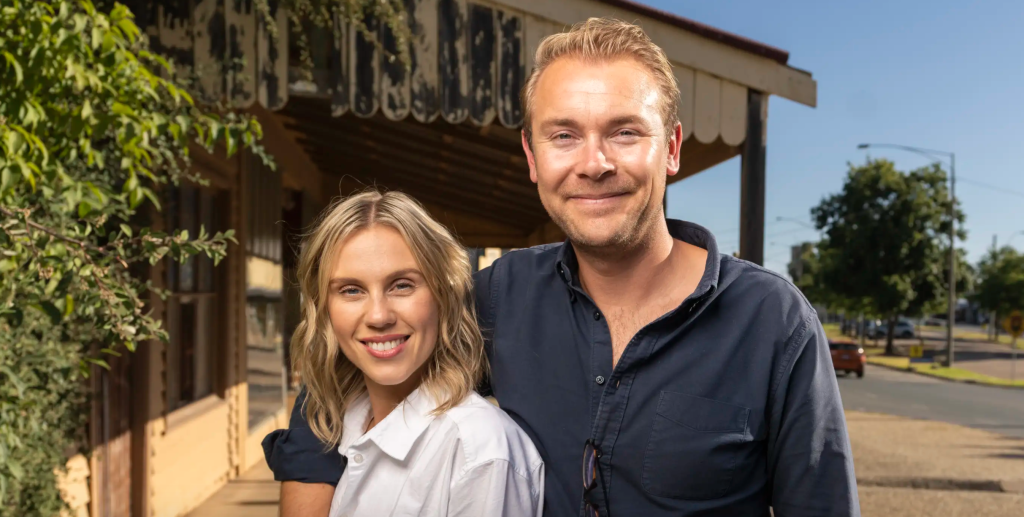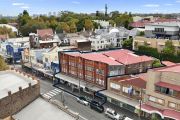
The boom in country towns is no flash in the pan
It is a trend that could reshape regional economies for decades to come. Record numbers of Australians are turning their backs on pandemic-hit big cities, taking advantage of being able to work from home, and relocating to commutable country towns and their lure of open space, fresh air and cheaper housing. This, in turn, is creating new jobs and business opportunities.
In April-June last year – the first three months of the lockdown – capital cities suffered a net loss of 10,500 people, the largest quarterly decline on records going back to 2001, official data shows.
September quarter figures, due for release next month, will likely show further evidence of the flight from city to country, given the extent to which regional property prices have surged in the past year.
Regional property values jumped 6.9 per cent in 2020, more than three times the 2 per cent figure of the combined capital cities – reversing a 15-year trend of regions underperforming their metropolitan neighbours.
In December, regional house prices gained 1.6 per cent – the most in 17 years – with record prices achieved in NSW’s Hunter Valley ($453,000), and in the Victorian cities of Bendigo ($437,000), Ballarat ($437,000), Warrnambool ($367,000) and Shepparton ($303,000), CoreLogic and CommSec research shows.
“Regional home prices continue to outpace capital cities and house prices are out-pacing apartment prices. Both reflect COVID-19 effects, especially the new reality that work can be done anywhere and at any time,’” says CommSec chief economist Craig James.
Many of Elders’ regional offices recorded double digit growth last year in the number of sales transacted, says Belinda Connor, head of residential real estate at the rural specialist company says. Homes were snapped up a day or two after hitting the market at significant premiums to the listed price, she says.
“People seeking a lifestyle change used the pandemic and the trend towards remote working as the catalyst to make a move to regional centres with excellent infrastructure. Families selling up in expensive capital city locations and buying, sometimes sight unseen, in regional hotspots is becoming commonplace,” she says.
Among those who made the move out of the capital cities this year was Alex West, CEO of broadband provider Swoop.
Previously a resident on Sydney’s North Shore, West and his wife, Joanne – both 43 – bought a farm in the Hunter Valley, two hours up the M1 motorway in December, after selling their Sydney home in October and after a short spell living on the Central Coast.
The Wests and their three children are now happily ensconced among the Valley’s mountain vistas and famous vineyards, with busy city life a rapidly fading memory.
“The move now has very little impact on my day-to-day working life,” says West. The structure of my day is the same with the exception that the number of in-person meetings has been reduced and replaced by virtual meetings.”
“It’s somewhere we plan staying for the foreseeable future as a family.”
It’s not just regional house prices that are rising as city residents compete for often-limited stock in previously quiet country towns.
Job vacancies – another key indicator of economic activity – are growing at a much faster rate outside the capital cities, says the Regional Australia Institute (RAI) a not-for-profit think tank.
Job vacancies advertised across regional Australia hit a record high of 54,000 in October, up 7.4 per cent on September, and a 13 per cent increase from the year-earlier month, RAI’s research shows.
Mainland capital city job vacancies also recovered in October, but are still down 20.7 per cent on a year ago.
Dr Kim Houghton, chief economist at RAI, said the regions were much less affected earlier on by the pandemic and that consequently economic activity broadly has been much stronger than in the capital cities – except in those areas reliant on international tourism like Cairns.
“Mining has done really well to keep its workforce active and the agricultural sector [supported by high commodity prices and good seasonal conditions] has also done really well.”
“Job vacancies are real numbers. They are jobs that need filling…they drive the movement of people to regional places.”
Importantly, Dr Houghton points out, almost half the vacancies in regional areas are for highly skilled trades and professionals including in the automotive, engineering, construction, medical and legal sectors.
“There’s been a real shift in the regions. Low skilled jobs dominated 10 year ago.”
According to Dr Houghton, if these jobs are filled, it can “create a spiral of success” bringing in the soft infrastructure like healthcare and education that make regions more attractive to other employers.
Among those seeing the potential in country towns is 32-year-old Melbourne property developer Andy Peters.
In October, Peters, his fiance, Crystal Kimber, and business partner David Powell opened a high-end wine bar in Nagambie, a pretty town of about 2000 people surrounded by wineries and horse studs 90 minutes up the Hume Highway from Melbourne.
Called Eighteen Sixty (a nod to the nearby well-known Tahbilk winery founded in that year), the wine bar serves and showcases only regional wines complemented by an Italian menu of pastas, cheeses and desserts.
While initially its 38-person indoor capacity was restricted to 10 because of COVID-19 restrictions, Peters says the business is now “flying”.
“We’re open Thursday to Sunday and most days we have periods where we are booked out. We’re getting a high amount of local patronage, but our peak periods are coming from overnight visitors and daytrippers.”
Following that success, the trio has expanded into the adjacent vacant shop, which is being fitted out as a café and provedore.
The rents are a fraction of what they would pay for retail space in Melbourne and the local council has been extremely supportive of their efforts to add a dash of sophistication to Nagambie’s High Street.
“We see this as a market that is only going to grow stronger,” says Peters.
“Two good homeware and gift stores have opened on the main street and they are both trading exceptionally well,” says Peters. “We’re looking at further opportunities in this northern Victorian corridor which is undersupplied with good quality offerings.
“Towns close to Melbourne have, huge amount of growth potential,” he says.
Developer Matt Belford, who heads up one of Victoria’s biggest private developers, ID_Land with co-founder Jeff Garvey, is also confident the regional boom won’t be a flash in the pan.
ID_Land has almost a third of its project pipeline in regional areas, including Willow, a $250 million housing estate in Gisborne in the Macedon Ranges – about an hour from Melbourne.
Last month, it paid $40 million for a 37-hectare site in Armstrong Creek, on the outskirts of Geelong.
Supported by generous government incentives including HomeBuilder and regional grants for first-home buyers, sales are booming with about a quarter of buyers coming from Melbourne.
“The last three-four months we’ve had our best sales results in the 11 years of the business,” Belford says. “COVID has opened up people to the idea of making the move out of Melbourne and more will do so.”
But it also creates headaches for regional councils that never saw COVID or the boom in housing demand coming.
James Dibble, managing director of Ballarat-based Grange Development recently acquired a 66-hectare site in Romsey, a small town in the Macedon Ranges where the only pub is boarded up and local businesses have struggled because of a lack of population growth.
Now, with Melbourne commuters moving to the area, the critical mass needed to revive these businesses is coming, However, Dibble says the rezoning of land needs to be fast-tracked to be able to meet this demand.
“Pre-COVID, Romsey had max capacity for about 241 lots. New research shows the ongoing demand is now 150-160 lots per year,” says Dibble.
“It could be a five-to-six-year process to appropriately accommodate for this demand,” he says.
In the NSW Southern Highlands rural properties and blocks of land are selling within a week or two of for sale signs going up, says local Wingecarribee Shire Council mayor Duncan Gair.
“We get spikes in house prices from time to time. But I really don’t know when this one is going to end,”
“I am a strong believer that you need growth and progress ,but the trick is to maintain the ambience of area that attracts people to it in the first place. That is the juggling act.”
He also is worried about the impact the regions faster growing population will have on infrastructure and services.
“We are already running into trouble with our sewerage schemes virtually at capacity and have been directed by the EPA to upgrade them,” he says.
But he accepts that people from Sydney can buy “quite a nice house” here and still have money left in their pocket, and that that trend will only accelerate.
“COVID has been the catalyst for making this happen.”
Among those who now call the Southern Highlands home is new Bowral resident Tom Redden.
Rural properties in Bowral are selling within a week or two of listing
Originally from Coonabarabran in central NSW (where he first relocated to work in the pandemic) Redden traded in a 60 sq m flat he co-owned with his brother for a four-bedroom house on a quarter of an acre he bought with his fiance in September.
His brother-in-law, an investment banker. purchased a four-acre property in neighbouring Burradoo.
“I’m loving it. It’s a more relaxed lifestyle with everything you need. You can have a nice meal, the shopping centre is close by and people are so accommodating in the bush.
Such is his enthusiasm for his new home, that Redden is launching a regional cycling tour with three of his mates to showcase the Southern Highlands.
“You’ll see a bigger shift out here once people realise how far their money will go.”
Whether the movement out of the cities will become entrenched will depend on how regional centres and country towns can grow with the influx of new people, whilst retaining their character and affordability.
“If employers see the value of moving further out, these regions could become second or third centres of economic activity whilst relieving pressure on city infrastructure,” says Dr Jordy Meekes, a business and economics research fellow at the Melbourne Institute.
But he also warns of the negative effects on wellbeing, family life and job satisfaction associated with long commutes (as shown in a 2019 Household, Income and Labour Dynamics in Australia Survey)
He also wonders how people will feel about their new lives in the country during the colder winter months “when the value of a living in low density may be less apparent”.











